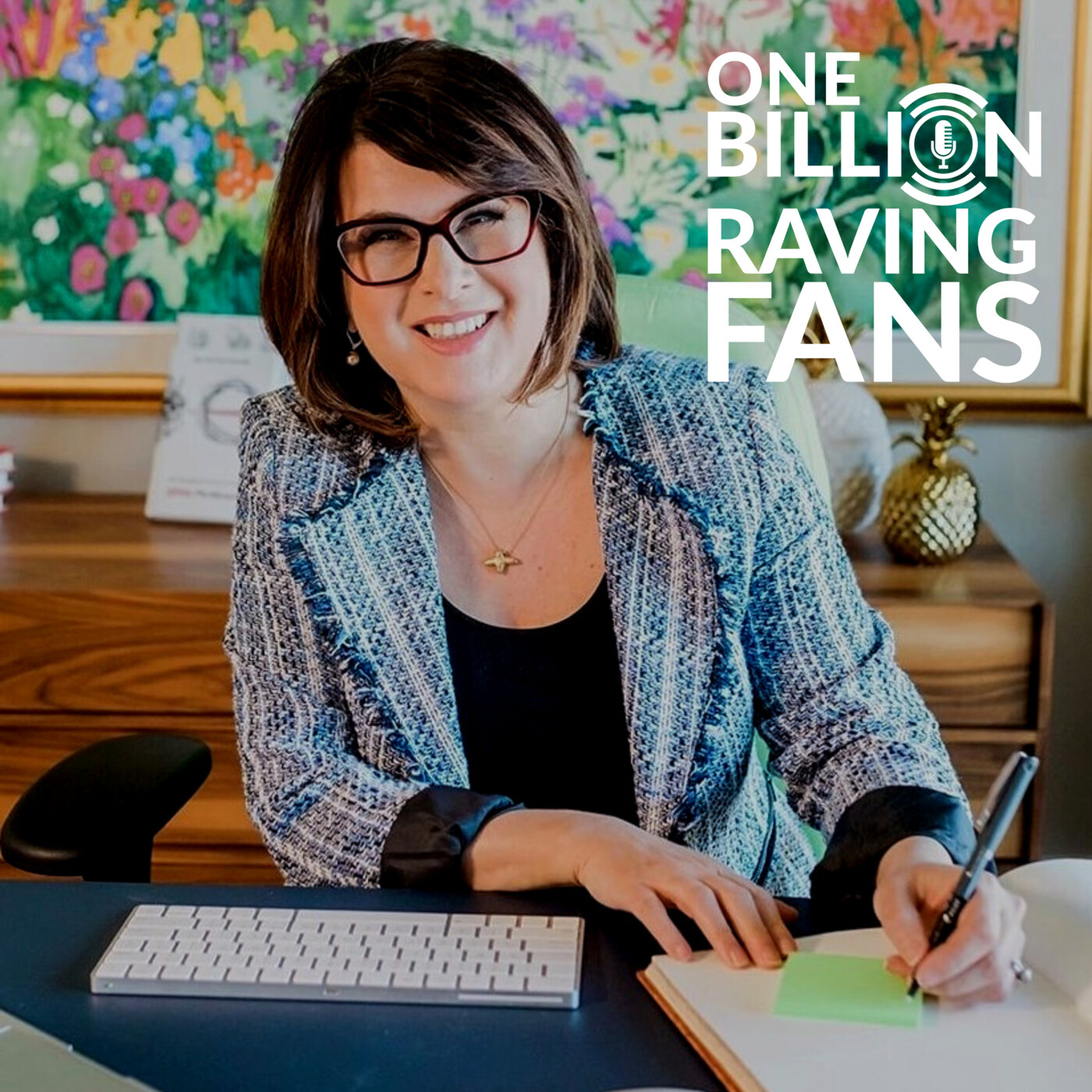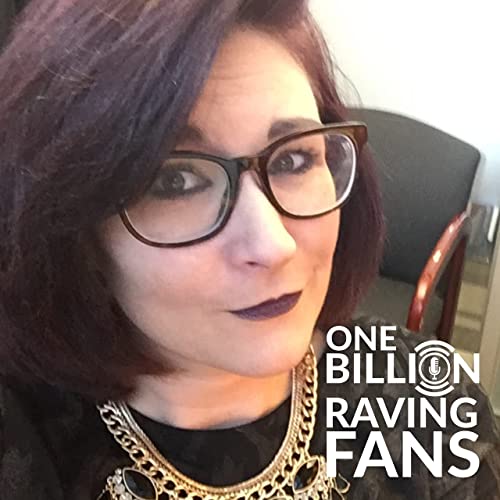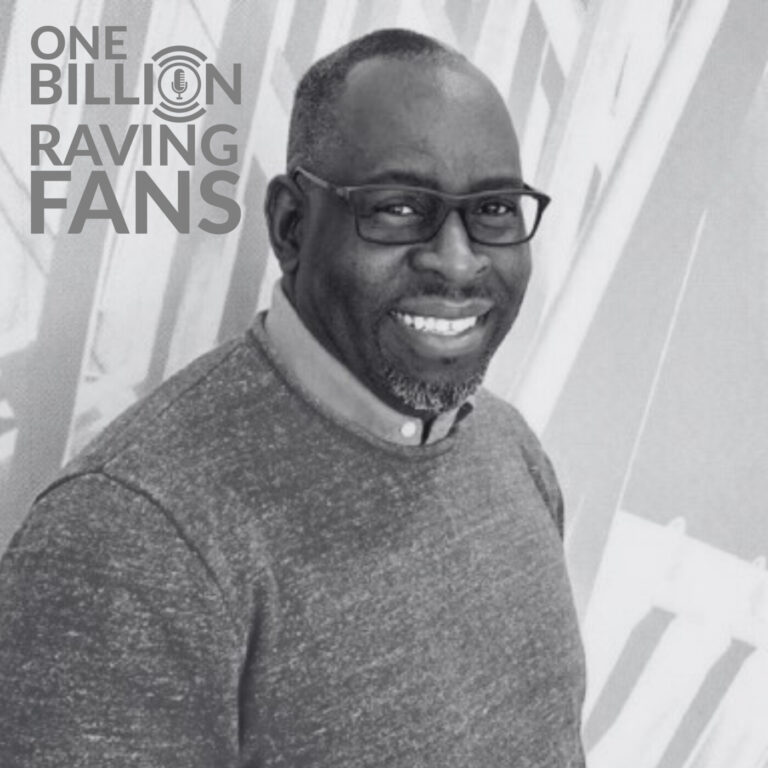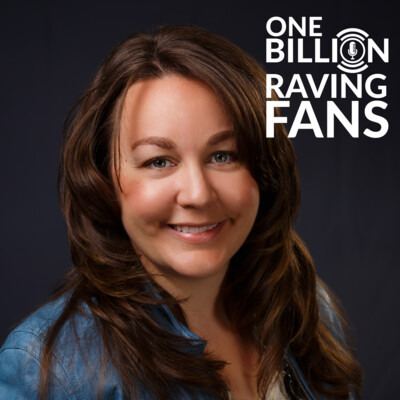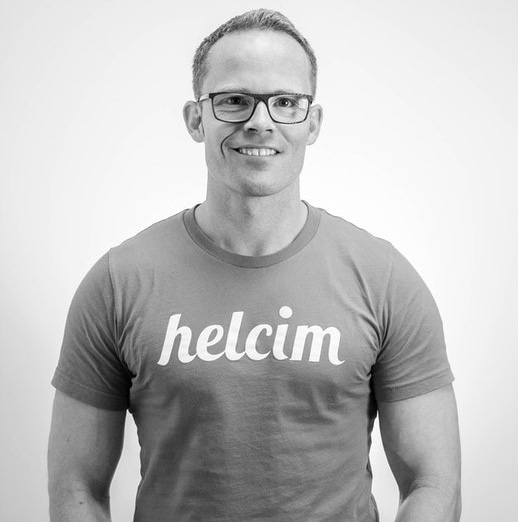Episode 1: Ildi Arlette
Why an Existing Customer Focus is a Powerful Business Strategy
This is just one of the powerful insights Ildi Arlette offers us during her interview on the One Billion Raving Fans podcast, in which we discuss prioritizing customer focus on your existing customers rather than only on acquiring new ones.
Ildi Arlette of Results Continuum Inc. has spent over two decades working with spas, hotels, clinics and schools to help them to build processes and cultures that support service excellence.
In today’s post based on their podcast discussion, Ildi and Shannon talk about bringing humanity back to service delivery and why Ildi says businesses should focus on the customers they already have rather than attracting new customers.
Along with a discussion around customer focus, we’ll be covering several other important topics, including customer service metrics, rethinking customer service touchpoints, and much more.
Let’s get started!
Customer Focus: New versus Returning Customers
We started off our interview with Ildi with this big question:
When we think about excellence in customer experience, what does that mean to you?
Ildi explains that at its core, customer experience is a relationship. As complex and dynamic as these relationships can be, there are also a lot of myths around what they are and what they aren’t. One of the areas where many get confused is thinking this relationship is permanent and ongoing in a really predictable cycle. And it’s not! Instead, service excellence has to do with a relationship and what happens in that relationship.
So, then what’s the most common point at which the customer experience tends to break down?
Ildi answered: The whole thing is broken.
(Speaking of patient experience, click here to read about what makes it such a worthwhile investment)
Challenges with customer focus
Running a business with a customer focus and ensuring the very best customer service is offered at every step is an admirable pursuit. But it’s not without its challenges.
For example, how do you do that when watching labour costs? How do you do that with the great resignation and not having enough team members? And how are you even supposed to know?
Raving fans vs. satisfied customers
When it comes to the differences between raving fans versus satisfied customers, Ildi had even more powerful insights to share.
Great experience can mean different things to different businesses, but usually, it’s one of two things: either we did so well to serve you and give you such a great experience on your visit that you’ll come back. Or it means that you’ll come back and be a raving fan.
That led us to our next question for Ildi:
Why does it matter so much when it comes to medical aesthetic clinics? Why is it not good enough to just have a satisfied customer? What’s the difference for you?
Her answer, unsurprisingly, was packed with helpful insights.
There is no such thing as ‘the happy customer’. Although in the 80s and 90s, and early 2000s, we talked about having a happy customer. Now, we shift from is the customer happy to is the customer successful?
So, are they happier in some way or enriched by having done business with us? Or are they more successful having done business with us or interacted with us, and success we defined as when this patient came to our med spa? Did we help them succeed by giving them an experience, an opportunity, or some kind of knowledge while they were here?
And that is sometimes an uncomfortable definition for people. Sometimes businesses want to simplify and say, “well, a happy patient is one that doesn’t have to wait.” Or that a happy patient fills out an online review. And Ildi is absolutely convinced, after 18 plus years serving this industry and 27 years in business, that it’s entirely the wrong metric.
(Does your business use a virtual queue? Here are some reasons to start!)
If that’s the wrong metric, we wanted to hear from Ildi about what the right metric would be.
So we asked:
How do you measure a successful customer?
Here’s what she explains:
Number one, we look at conversion. And how do businesses measure conversion? Does there need to be a sale? Do they have to buy a product? A laser service? Essentially, did they have to buy something for conversion to happen?
If you Ildi, she’s not sure they have to buy something.
But instead, we do measure it by asking, did this person come back? And did they tell others?
‘Wowing’ the client
Nowadays, customers are finicky. Businesses always have to be giving something away to them—there has to be some extra incentive. And that’s the equivalent in service of what’s called
‘wowing that client.’
Ultimately, however, what customers want is a consistent level of service. Service excellence has to do with consistency and predictability, not perfection. But that’s a lot of what businesses are missing.
Other worthwhile customer service metrics
Next, Ildi discusses another important customer service metric: When our client or patient talks about our clinic, what did they say?
It’s worth noting there’s an assumption that a raving fan is positive all the time. Everybody’s friendly, and everything is perfect. So now clinics want to measure conversion. And they also want to measure patient experience.
Ildi also offers an example that’s doable for most businesses and most clinics because the people who are working in those clinics have experienced this:
Consider a client who goes to a medical spa for a service. What sense does it make to ask them about their experience at the very end of the appointment? Or, how much sense does it make after you’ve stayed at a hotel for three, four nights to be asked at the end, when you’re hit with your bill, “So, how was your stay? Was everything okay?”
Instead, it’s time to switch it up and consider when they should be asking those questions? In terms of medical aesthetics, what we look at is the patient flow? And what are the touchpoints?
Customer service touchpoints
Next, Ildi shared more insights, and examples about customer service touchpoints and the difference switching them up can make.
An example would be that the person who booked to come and see someone at that med spa had an experience maybe through social media, maybe through the website, they may have had wait times for the appointment, they may have had wait times in the beautiful, beautiful waiting area that clinics create.
And a perfect point of contact would be when we’re establishing rapport, and we get into a private treatment room to say, “Shannon, I’m so glad you came in to see us today. How was your check-in today?”
Why not check in then, she asks? After all, that’s where you’re going to get feedback.
(Some waiting is inevitable for just about every customer service business. Here are some ways to make it less painful for the customer or patient)
Are we afraid of the answers?
As Ildi explains, a few challenges can come up when it comes to implementing these new customer touchpoints.
When it comes to why we don’t ask customers how things are, it’s often because we’re actually afraid of the answer. And we may not have a plan for what response we get.
The truth is, feedback is hard. It’s not easy to hear, “Well, you know, I really hate your parking lot.” Or “you know, the receptionist was rather abrupt.”
Because if you don’t have a plan for how you’re going to handle that feedback, it can be really difficult to hear.
And in clinics, that feedback is mainly surrounded around a positive review and gaining a positive review that I can put on a digital format to induce others and say, “See, look how many people said I love coming here! Everyone is so friendly!”
This also comes down to another mistake many businesses make in their thinking around customer service: that friendliness equals service excellence.
And as we know, it absolutely does not.
So, then, we wanted to know, what do we do next?
Anticipation exercise
One of the greatest areas of opportunity is to ask ourselves and go through what’s called an anticipation exercise. How do we anticipate what service looks like, solely from my customers’, patients’, guests,’ clients’ points of view?
This offers you a hugely different point of view. So much so that if you’re finding serving your clients is starting to feel inconvenient to you, then you begin to operationalize and create a customer flow that suits you, not the customer.
Now, as Ildi teaches in her workshops, service excellence has to start with taking care of the provider, the workplace, and that leader long before they even look at that customer experience.
People perceive that you need to do more, have more, and get more to improve service excellence. But the reality is, we need to go back to the beginning of our conversation and ask questions about your staff to customer ratio: How many staff do you have? How many people are you serving?
But Ildi says she has never worked in a place where people don’t have one of two complaints:
Either they don’t have enough stuff, and/or they don’t have enough space.
Well, guess what? In the last 30 years of Ildi’s experience, some people did build bigger spaces.
And they did bring in more stuff. And then you give it anywhere from six to 24 months before they’re back in the same boat.
That’s because there is this pressure to feel like we need to do more constantly. It’s service fatigue because you can never catch up. Then, how do we take those complaints and feedback for which we risk having those conversations? And do we solve everything through operationalizing? Something?
So the question is, where’s the humanity in service excellence and customer service?
It’s a complex dynamic of serving our guests and customers and patients and taking care of that team to make sure they’re prepared and cared for throughout that experience.
Every conversation businesses have with a customer is a risk, just like in leadership and coaching. But it doesn’t have to be so scary! Ildi explains she really understands and sees how risky it feels to pull up chart notes from a patient’s last visit and say, “Oh, I see that you bought $300 worth of skincare last time after your laser treatment. How did that skincare regime work out?”
But wouldn’t you also say it’s a bigger risk not to ask the question?
Because ultimately, many people don’t want to give negative feedback, and they don’t want to say anything. But they will say something by not coming back. They’ll say something by not recommending your business to a friend.
Next, we came to one of the most significant points of this entire conversation. That is, should your custom focus lie primarily on acquiring new customers or retaining existing ones?
Here’s what Ildi says.
Existing customer focus
One of the most common questions Ildi gets is: “How can I get more patients?” Or, “how can I get more customers?” And unfortunately, the common mindset is that it’s a marketing exercise.
This can be helpful, but is it the best use of your time? Instead, consider taking care and giving attention to the people you already have.
This is for two reasons. One, they are more likely to stay with you. And secondly, they are guaranteed to bring you new people, new clients, new patients, new customers, for a quarter of the cost most businesses spend on marketing. Never mind the energy that they’re spending!
Customer appreciation events
Next, we talked about ways to switch to an existing customer focus and improve service and experience for them.
One such way of doing so, as Ildi explains, is with customer appreciation events.
Customer appreciation events should be a genuine appreciation, a genuine demonstration of showing gratitude, while at the same time anticipating our patients’ and clients’ needs.
So, the concept is what if once a year (which you could even advertise as once a year) everything has a better price—everything goes on sale. And that offer is made to customers because they are existing clients. There are no loopholes, and there’s no fine print of this restriction and that restriction. It should be an open offer to say thank you for your business. We appreciate you. We’d like to have you come back.
And here’s an incentive for businesses to do so: it takes away the pressure to discount all year round by maintaining the authenticity around prices for services and products. If, for some reason, the cost is an issue or an objection, this is the one time of year you could get it for something different.
An Existing Customer Focus Challenge for You
Finally, Ildi leaves businesses and clinics with a challenge:
She challenges businesses to connect with 20 of their existing patients, whether they were here a year ago or whether they come in twice a year and to, in their own way, filter through their own experience. Interact with them in a way they usually wouldn’t—an email blast doesn’t count!
When you connect with those 20 people, yes, you’re risking getting feedback. You’re risking getting complaints. But, for the vast majority, you are also creating a connection within your person.
So, instead of chasing the new clients, chase the ones we already have. That’s part of service excellence. It belongs in the category of “if it doesn’t challenge you, it doesn’t change you.”
Because it is challenging, it’s scary to ask, “how have things been for you?” Or even to ask for a referral or genuine feedback.
Are you nurturing or restricting a culture of service?
Next, it was time to talk about what we’re doing as leaders that either enable or nurture or restrict a culture of service.
Again, the misnomer is that people think that because they have great staff and love their staff—that’s excellent service.
But, as Ildi argues, it’s absolutely not!
She elaborates:
If the goal is to increase and elevate our level of service in our business, look at what our teams are doing and respect that those teams are made up of individual human beings. They are not their job title. They’re not a nurse injector. Or they’re not a laser technician. They’re not a server. They’re not a receptionist. They’re a person.
So, what tools as leaders are we giving our team other than a motivational talk to offer super, super friendly service? That’s where we need to start.
We loved having Ildi Arlette of Results Continuum Inc. on the One Billion Raving Fans podcast, and we hope you got as much from her insights as we did.

